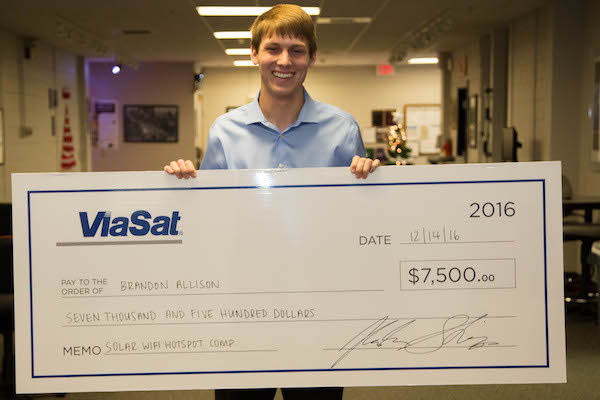
Hard work and dedication has paid off for three electrical engineering students who received a cumulative total of $27,500 in award money for their innovative Wi-Fi hotspot designs.
ViaSat, a satellite broadband company, held a semester-long Wi-Fi hotspot design competition with students in the Texas A&M University College of Engineering. The students were challenged with designing a solar-powered Wi-Fi hotspot with a battery backup to be used in remote areas. The goal of the competition was to help bring internet services to remote communities, disaster relief areas and schools with a low-cost design.
“We are extremely proud and excited of this partnership with the university and the tremendous work and creative minds of the students who participated in this competition,” said Cody Catalena, general manager of ViaSat Wireless Services.
“With an office comprised of many Aggies, it is always our goal to invest in the surrounding student community and the university that has made such a significant impact in our lives, while concurrently thinking of new innovate solutions to bring connectivity to the previously untouched world.”
Nine student teams, comprised of 13 engineering students, participated in the ViaSat competition throughout the semester. The teams worked closely with ViaSat and other industry experts on their designs to gain skills beyond the classroom. All groups presented their concepts, design approaches and plans to judges, and two final teams continued developing their prototypes in the final month of the competition.
The first place team was awarded $20,000 for its innovation and second place received $7,500.

In first place were Cassidy Shaver and Hanzhi Guo who designed a solar Wi-Fi hotspot that targeted markets in schools, campgrounds and businesses. Their design addressed housing, heat, moisture and pressure stability, and included installations for roof and pole mounting.
Brandon Allison came in second place with a solar Wi-Fi hotspot that addressed solar uptime and panel size, and included installations for mobile, trailer and permanent roof mounting.